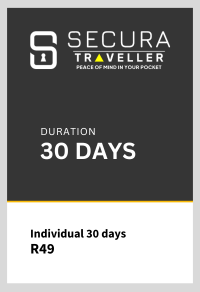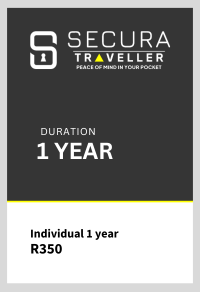SATSA welcomes new visa and immigration developments
The standardisation of port-of-entry visa requirements heralds positive change at Home Affairs.
JOHANNESBURG, 14 OCTOBER 2024: SATSA is encouraged by the work being done by Minister Leon Schreiber and his team at the Department of Home Affairs (DHA), including the launch of the remote working visa scheme (officially gazetted on 9 October) and the new immigration directives published last week – which bring welcome reforms to the country's immigration policy.
SATSA CEO David Frost says there has been significant movement from the DHA in recent months: “A positive shake-up was long overdue. We’ve been talking about access, visa reform and the need for streamlined, digital visa processes for years. The fact that we have a Minister committed to simplifying visa requirements and processes, especially for key source markets, is a massive win for the tourism industry – but it is just the beginning.”
The new Remote Work Visa will attract ‘digital nomads’ from across the world, with extended stays benefitting the entire value chain. But for Frost, even more significant is the standardisation of entry requirements for South Africa’s visitors’ visa.
“In particular, SATSA welcomes the announcement that the Minister has issued a directive preventing officials from requesting additional documentation from people who are seeking tourist visas to visit South Africa. Immigration regulations only allow staff to request a passport, bank statements, itinerary and flight details and yet applicants are routinely asked for more, including minimum bank balances or letters from their employers. The directive explains that no official or embassy may require any additional documentation when processing a visa application. The additional requirements have made it very difficult for prospective tourists to visit South Africa, especially those from India and China which are two of the world’s fastest growing markets,” says Frost.
“It’s a game-changer,” says Frost. “Officials working in South African Missions abroad are often a law unto themselves, and the new immigration directive is a seminal change. In addition to a valid passport, there are now only three items required to process a visa: a statement detailing a visitor’s purpose and duration of stay, a valid return airline ticket, and three months of certified bank statements,” says Frost. “It’s much simpler and straightforward – and leaves no room for interpretation. Officials have to adhere to the guidelines and cannot complicate the process with spurious requests.”
“The new Trusted Tour Operator Scheme (TTOS) also holds vast potential” says Frost. “It’s an interim measure, initially aimed at China and India, that will allow accredited and registered tour operators to deal with large group visa applications. This will alleviate the pressure from applications processed via the usual system, facilitating individual applications. However, with the new directive issued by Minister Schreiber reducing the amount of supporting documentation required, this is an overall win for the market.
SATSA continues to engage with the DHA around the final implementation of the TTOS, and Frost believes that it has to be an open and consultative process. “Both China and India hold enormous potential for South Africa, and we cannot afford to drop the ball. The TTOS will be an important blueprint moving forward.”
For Frost, the ultimate goal is a fully electronic system similar to the one Kenya launched at the beginning of the year:
“Kenya have taken a bold approach. All foreign nationals can now enter the country without a visa for leisure or business travel for stays of up to 90 days. Visitors obtain an Electronic Travel Authorization (ETA) online prior to travel – which costs USD 30 and takes up to three business days to process,” explains Frost.
It’s working for Kenya, which has seen remarkable recovery, reaching 142% of their pre-Covid tourist arrivals by the middle of 2024. In comparison, South Africa reached 84% recovery (or 1.2 million visitors).
“Kenya’s tourism strategy focuses on digital transformation and e-visas, and it’s paying huge dividends, says Frost. “They’re on track to meet their ambitious goal of attracting 2.5 million tourists by the end of 2024.”
The launch of the Remote Visa Work, TTOS and the implementation of the Points-Based System for Work Visas (which addresses past gaps and inefficiencies), will definitely attract people to South Africa, but we have to do much more.
“SATSA remains firm on issues like 90-day visas for all visitors, and waivers for EU countries that still require a visa,” says Frost. “Minister Schreiber’s vision for transforming Home Affairs into a digital-first organisation is a commendable one – but we have to ensure it includes visa reform across the board, making South Africa one of the most accessible, welcoming countries in the world.”
























